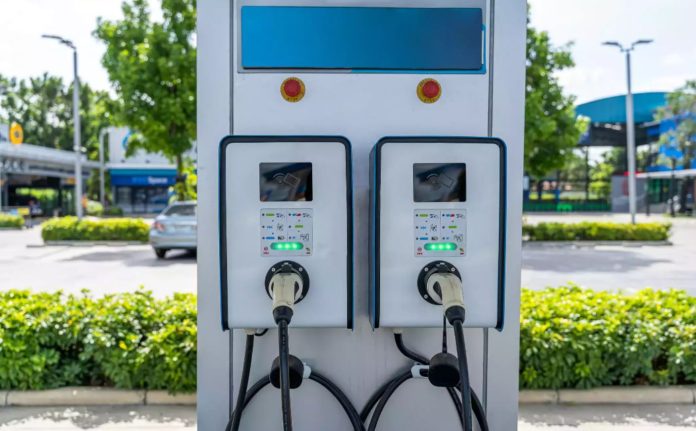Energy management and electric vehicle charging solutions provider Ez4EV on Wednesday said it is looking to roll out its ultrafast charger EzUrja in 50, 100, and 200 kWh capacities for electric passenger and commercial vehicles as well as e-bus fleet operators by July this year.
The company said it has designed and developed a decentralised clean power generating platform, using solar, compressed biogas as well as compressed natural gas to offer a solution for Battery Energy Storage System (BESS)-based EV charging services, both in static and mobile space.
It launched its first ultrafast mobile EV charger EzUrja Mobile for all types of electric vehicles last year.
The ultrafast chargers with 50 kWh-250 kWh capacity are integrated with a patented Li-ion battery and EzPyramid’s proprietary Powertronics. With the help of a connector, these chargers can charge up to four vehicles simultaneously, the company said in a release.
The company said it is looking to roll out 50, 100, and 200 kWh capacity chargers for electric passenger and commercial vehicles as well as e-bus fleet operators by July this year.
The company also said it aims to deploy more than 300 such ultrafast battery-integrated EV chargers (DC-DC), over 100 static solar/CBG/CNG-based integrated EV chargers, and more than 10,000 ultrafast static EV chargers in 60 kWh-240 kWh capacity by 2024.
Ez4EV provides distributed energy management services that unlock the inherent value of the battery system through load shifting, demand charge management, resiliency, and more, followed by charging-as-a-Service, the release stated.
“Our focus is to ensure clean energy, regulated and at-ease charging service to all EV owners. We will be offering customised products and solutions through our proprietary technology for state-of-the-art BESS, and EV charger technology, supported by more than 75 service centres nationwide,” said Ashhok Kapoor, Chief Business Officer at Ez4EV Group.
Ez4EV’s proprietary battery-integrated EV charging technology, EzUrja static, addresses grid constraints by packaging charging infrastructure, grid infrastructure, and energy storage into a fully integrated compact solution, it said.








